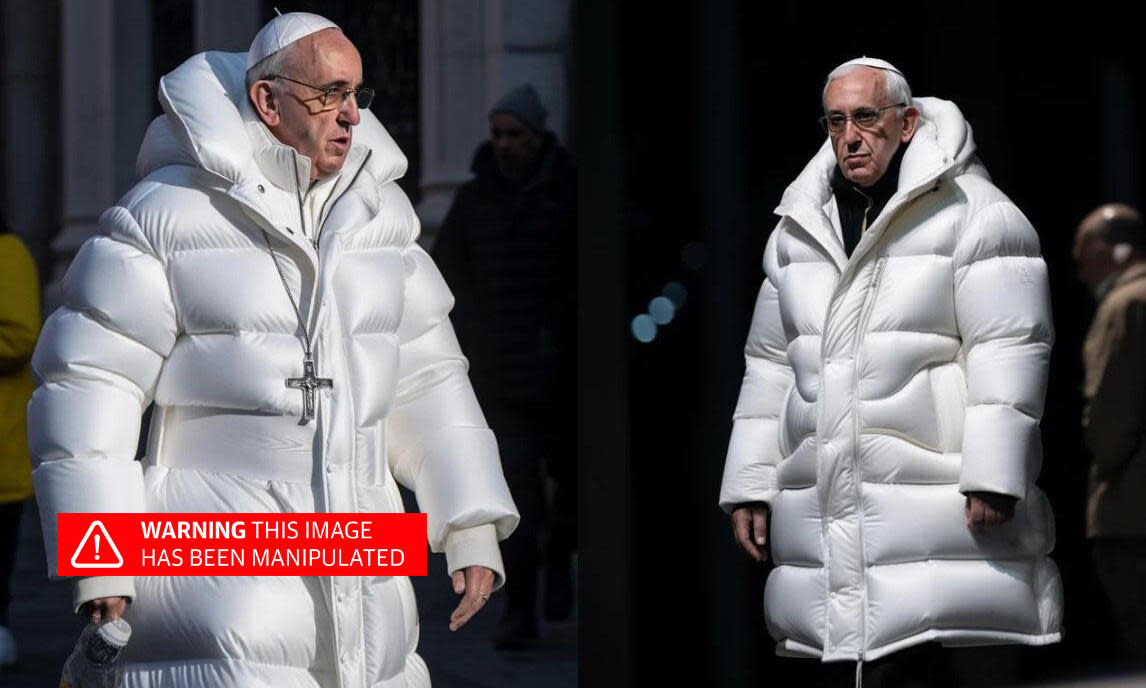How to tell if an image is AI-generated

AI-generated images are getting better and better, but there are still some telltale signs you can check.
Hands and limbs
Most people have five fingers on each hand, two arms and two legs. Many AI generators get a bit more carried away. State-of-the-art technology is better at hands, with six fingers or undifferentiated claws now somewhat rare, but in any group scene, pay attention to figures in the background: there’s likely to be a surplus of legs, some gnarly looking hands, or an arm slung around a body-less shoulder.
Words
Image generators are not text generators, and creating pictures with elements that look like text is a very different job to creating actual readable text. Misspelled words, letters that blur together and mysterious characters can all be good signs.
Hair
Human hair is made of strands that flow from the head down. AI hair strands often have a less defined start and finish, and can look painted up close. Watch out, though – normal image compression can also do funny things.
Symmetry
In the real world, objects often come in pairs or groups. Think about earrings or cutlery: it’s an unusual situation to find mismatches. Some AI systems can forget what’s happening on the left side of a face once it comes time to render the right.
Textures
Repeated patterns, fabrics and textures are notoriously difficult to render. In the real world, bricks tend to be a uniform size and shape across an entire building, while the floral print on a wallpaper will be stroke-for-stroke identical each time it repeats. Helpfully, this is one sign where a small variation is more likely to be fake than a large one: botched needlework might lead to a skewwhiff pattern on a dress, but it is unlikely to result in a gingham print being different at the top of the leg from the bottom.
Geometry
Look at the space an image is in, and the objects within it. Are right angles right-angled? Does a wall seamlessly become part of a bookshelf in the background? Can you visualise how the sofa fits behind the table that looks flush to the wall? If not, the picture might have been created by a system that has no understanding of 3D space.
Consistency
Are there multiple images purporting to show the same thing? Compare them! Generating multiple images of the same space from different angles and at different times is trivial in the real world, and absolute cutting edge in AI. Even video generators such as Sora, which can create videos moving throughout a virtual space, will rarely pan back to show something they have panned away from, because doing so reveals they have “forgotten” what was there originally.
Don’t get hung up on AI
If an image seems questionable enough that you’re poring over it for tells that it is AI generated, take a step back and consider whether you should trust your gut. Perhaps the image isn’t AI generated at all – but it could still be the result of an AI face swap, edited on Photoshop the old-fashioned way, staged entirely, or even simply miscaptioned (a so-called “cheapfake”). Just because an AI didn’t create something from whole cloth, doesn’t mean it depicts the truth.


